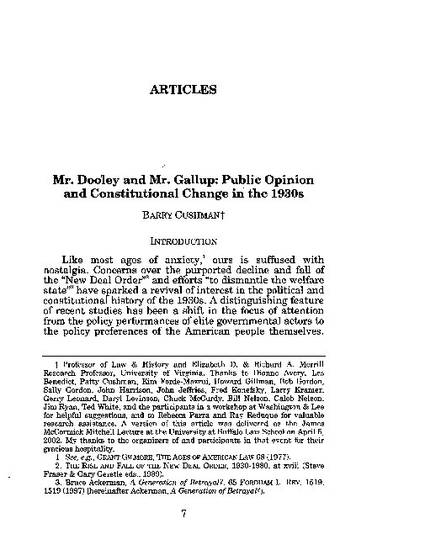
Scholars interested in the development of political and constitutional culture during the 1930s sometimes draw inferences about popular preferences on various issues of social and economic policy from the results of presidential and congressional elections. A review of contemporary public opinion polls taken by George Gallup for the American Institute of Public Opinion and by Elmo Roper for the Fortune Magazine survey offers a more granular understanding of popular views on the public policy issues of the day. This article canvasses all of the public opinion polls taken by Gallup and Roper between 1935, when they began publishing their results, and 1940, on five major areas of public concern: labor; federal regulatory power; redistribution; fiscal policy; and relief and social security. The poll results reveal public preferences that are far more politically moderate than some have inferred from the election returns. The results also show that comparatively little change in constitutional doctrine was necessary in order to accommodate those popular preferences. This in turn helps to rationalize, if it does not explain, the consistent popular aversion to proposals to limit the power of the Supreme Court, as well as the persistent public opposition to President Roosevelt's ill-fated Court-packing plan.
Available at: http://works.bepress.com/barry_cushman/15/
